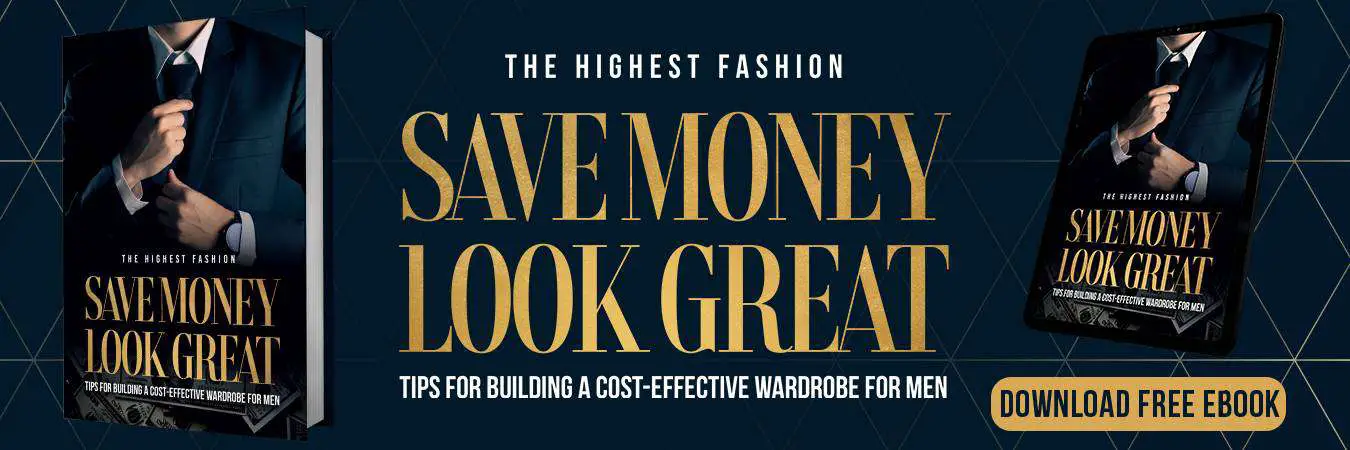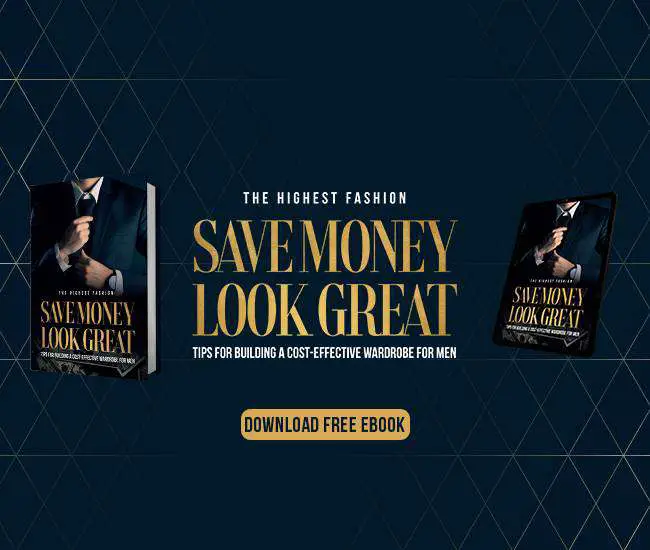Let’s Tackle the Questions You’re Probably Never Going to Ask “The Boys”— Why Do I Need a Tailor, How Much Do Tailors Cost, and What Do I Need to Know About Suits and Alterations?
Ever see that episode of Friends where Joey recommends his tailor to Chandler and, well, Chandler relays to Joey how wrong his tailor has been “tailoring”?
If not, you now have something to add to your watch-list agenda.
You’re welcome.
Moments like that, however, are precisely why many fear the hassle and strain of going to a tailor. It sounds uncomfortable, strenuous and superfluous, especially if you have never gone before.
And if you don’t know tailor terminology or how much something can cost, the stress levels can be way above par.
And that stress isn’t worth it, right? There’s plenty of better things to do than going to a tailor, right? It’s not the end of the world… right?
Well… not really.
At The Highest Fashion, we’re here to tell you that going to a tailor can be one of the best decisions you make for your closet, your style — your life.
Why Going to the Tailor Means More Than You Think
You have seven seconds to make a first impression. Up to 80% of the people you meet will judge your clothes.
Plastic suit buttons, lapels that are too large or small, breaks (pant length) that don’t fit your height— this all gets noticed and registers in the mind of the employer, love interest, in-law or aunt you haven’t seen in forever.
Tailors give you the custom-made style experience where each jacket, suit, coat or khakis fits you like a glove, adding a layer of quality, competence and ambition to your overall look. This does wonders when making impressions and feeling a certain way about yourself.
These artisans of trade understand how to build your clothing item to your specific body type, often using those seven seconds to see if you’re a sloucher, someone who works out, walk with a limp— the nuances of your being.
It is these details that give them the fine-tuning assessment they need to ensure they are sowing and aligning the item to your specific body need.
You’ll find that your tailor can know more about your personality and body figuration than anyone you know, and this will do wonders when you try to impress the rest of the world with your clear dedication to detail.
Quit the Fast With Things That Last
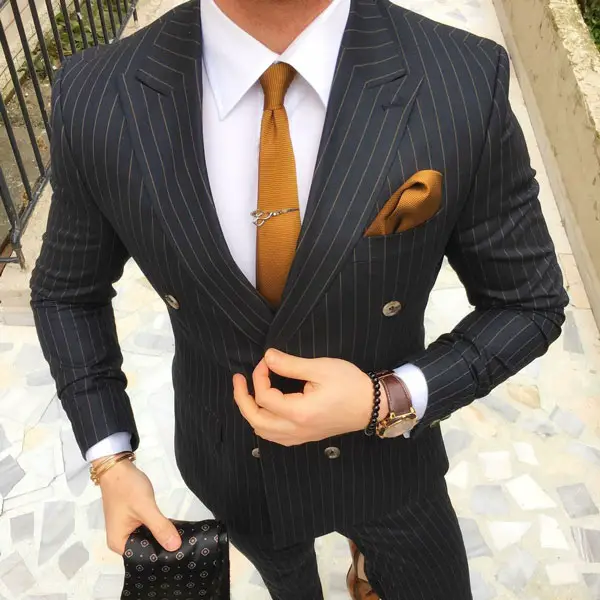
Photo above: Do you already know how to wear a tie clip? Here is your guide.
Go to any outlet mall or store chain and you’ll pick up a size you think is yours. Great! Efficient!
Except it’s probably not your actual size.
Particularly in the U.S. and the U.K., vanity sizing has made for a culture of size inflation where on-the-go clothing is made to mostly fit, rather than sit tightly. This is a direct result of businesses wanting to shed out as much clothing in a factory as possible— and to make customers feel thinner than they are when shopping.
But your body is your body— and only a custom-made fit will fit you 100%. A tailor’s sole skill is being able to make clothes fit the way they should and give you the only style experience you should’ve: personalized.
This vanity sizing will have you buying clothes over and over that feel like they fit this time and that other time— or with that one shirt and that one pair of shoes — but not with the rest of your closet.
You will save money in the long-run if you buy less clothes but ensure each fits your body in a flattering way. These are the items that are worth the money and any tailor can give you insight as to which clothes are made of material to last through the long haul and which you can expect to toss away.
It’s a Kind of Magic
A good tailor can work with anything. Like magicians, they use the needle as a wand to refine any inseam out of place, any loose button, any tear, or make your father’s old jacket to fit as snug as a bug in a rug.
Rather than spending an obscene amount of money on a new suit or new blazer, go to any thrift store and pull out an item that’ll cost you a penny. Watch it turn into a extraordinary piece when your tailor fixes it up as if it were meant for David Beckham.
Tailors can rejuvenate clothing to the point they look like new and mend things like torn buttonholes, ill-fit waistlines. Got pants that don’t fit right? Let your tailor hem, cuff or taper them.
Again, at the end of the day, if you care about looking good, your tailor does too. It’s their job to make you feel as comfortable and as good-looking in your clothes as you want to.
Can you imagine if every shirt, jacket and pant looked perfect on you? Can you imagine how well-dressed everyone will think you are and hence create positive affirmations to your taste, demeanor and personality? The psychology behind a well-dressed man is proven science: they get paid more, promoted more and feel themselves to be more empowered.
The logic is all there.
If you have a fever, you go to the doctor. A toothache? The dentist.
And if you want to make that seven second first impression last as long as your new suit, then go to a tailor. It might be the reason you get hired, the inspiration behind the girl of your dreams saying yes to going out or the approval you get from your boss to get your raise.
Impressions matter!
Getting to Know the Terms
Breaking Down Tailor-Speak
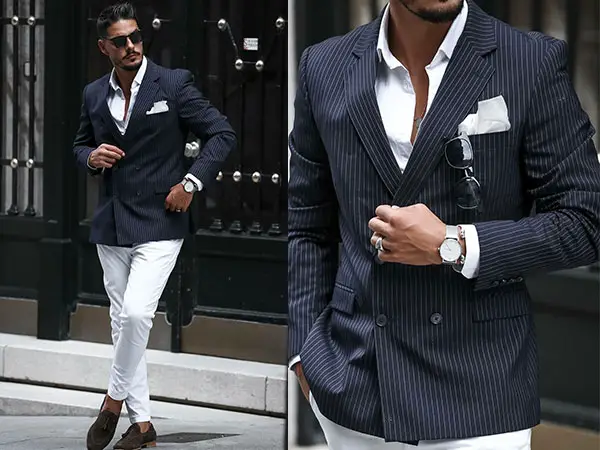
Tailors appreciate when you know the tailor language. The better equipped you are with the terms the more likely you will get the result you want in your alterations. After all, we’ve all been there when we nodded our head to a word we didn’t quite understand only to find out later we should’ve asked. We should’ve cared.
Below are some of the words you might find yourself hearing the day you visit the tailor and the broken down definition.
- Breaks: The fold or the creasing of a pant leg at the fabric around the circumference of the shoe
- Hem: To sew in an unraveled piece of fabric
- Inseam: The lining inside the pant leg that goes from the bottom of the crotch to the lower ankle
- Outseam: The distance between the waistband to the hem of the pant legs
- Cuffs: Purposeful folds to keep fabric protected
- Seat: The hip measurement to the widest part
- “Bring in the waist”: Ask for this if your pants are too big
- “Let out the waist: Ask for this if your pants are too small
- Darts: A sewn-in piece of fabric meant to make the garment have more shape
- Darning: Fixing up holes that are not found along any seam
- Out Breast Pocket: The pocket outside the jacket that can carry a pocket-square
- Lapels: The folds at the front of a suit jacket
- Evening-wear: Typically is used with navy or black tuxedos with satin lapels
- “Bring up”: This is used to mean shortening the length
- Seye: This is where your arms will enter the sleeve
- “Take in”: This means removing the fabric at the seams
- Taper: To narrow
- Overweaving: This means fixing small holes within the fabric by using material from other parts of the suit
- Reweaving: This means using outside material to fix small holes within the fabric
- Gorge: The area where the collar is attached
- Interlining: The fabric meant to provide warmth in a garment
- Pattern: A template used to model measurements
- Soft sew: A garment that is easily workable
- Skirt: The area of a jacket that hangs below the waist
How Much Do Tailors Cost?
So, if you got to this point in the article, that might mean you’re willing to consider going to a tailor. That means it’s time to get into the nitty gritty details like how much they can cost.
Keep in mind that the alterations you ask for range which directly influences the price range; however, the following prices tend to be the average:
Pants:
- Replacing crotch linings: $14
- Adding buttons: $15
- Hemming or cuffing legs: $10-$15
- Replacing zipper: $18-$20
- Altering waistlines or crotch linings: $18-$25
- Tapering pant legs: $20
- Recutting pants: $60
Jackets:
- Adding shoulder pads: $30 for both
- Closing the vent: $18 per vent
- Taking center seam in or out: $20
- Shortening sleeves: $24-$50
- Taking or removing sides: $25-$50
- Raising the back: $24
- Lengthening sleeves: $30
- Shortening: $30- $70
- Slimming: $40-$60
- Replacing lining: $50 or more
Tops/Shirts:
- Adding darts: $10-$20
- Slimming sleeves: $15-$30
- Adjusting shoulders: $25-60$
- Hemming: $15-$25
Any alternations that unique, embellished or tough can be up to the discretion of the tailor to provide a price they see fit.
Let’s Talk Suits
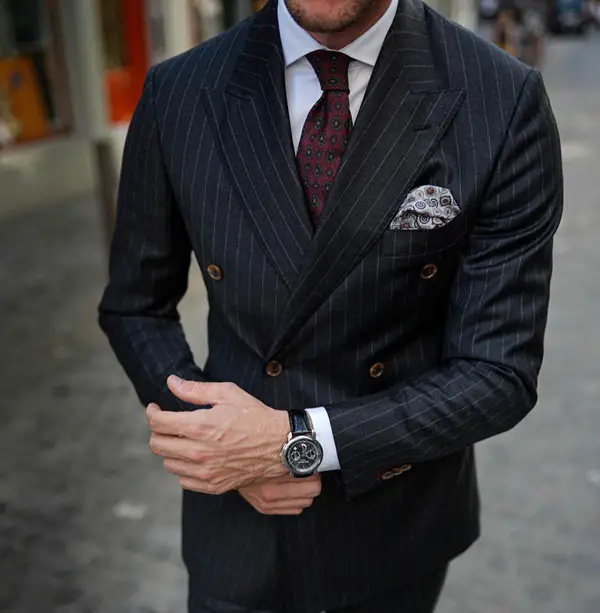
What man hasn’t thought about how much tailoring a suit costs when seeing the price of buying a new one?
Ordering a custom-made suit can cost as much as a trip to Paris — but for a much lower price, a tailor can fine-tune an old or second-hand suit to your body type. So, suit yourself!
If you’re thinking of tailoring, reference this breakdown of average prices for suit alterations below:
Suit Jacket:
- Adjusting Sleeves: $30-$60
- Shorten/Lengthen Sleeves With Button Holes): $150
- Adjusting Side Seams: $65
- Letting Out or Taking In Back Seam: $40-$65
- Shortening Jacket: $75-$120
- Reducing Shoulders: $160
- Reducing Collar Roll: $30-$45
- Relining Jacket: $200
- Replacing Pocket Linings: $25
- Replacing or Tightening Buttons: $2-5
Suit Pants:
- Hemming Pant Legs: $10
- Hemming With or Without Cuff: $20-$40
- Tapering Leg With Two Seam: $30
- Tapering Leg With Four Seam: $60
- Adjusting Waist/Seat: $25-$35
- Replacing Zipper: $25
- Adding Hem Guard: $25
- Taking In or Letting Out Hips: $30-$40
Suit Shirt:
- Adding or Opening Darts: $15-$35
- Hemming: $25-$40
- Tapering Serged Sides: $25
- Tapering French Seams Sides: $45
- Shortening Shirt Tails: $25
- Shortening Sleeves: $25-$40
- Moving Collar Button: $1-$5
How To Tell Good Suits From Bad Suits
A tailor can tell you straight away if a suit is good or bad quality, but if you’d like a little virtual cheat sheet, The Highest Fashion has you covered.
The first trick is to ball up a suit. If the suit is made of high-quality material, you will find that it takes some time before it creases. Wrinkles that show up right away means this suit should be left on the hanger.
The collar reveals a well-made suit just as well— flip it up and see if the seam looks hand-made. Perfect seams are machine-made and ultimately reveal a cheaply made suit.
Other unlikely sources include the buttonhole. If the hole is frayed, machine stitched, or looks sub-par, it might be best to leave alone or get an alteration!
As for the buttons themselves, be sure to never buy a suit with plastic buttons. Not only do they look cheap but also they can easily rip or fall off, leading to more visits to the tailor and more money spent than necessary.
How to Tell If A Suit is Designer
If your style is strictly designer, then you may want to read on for the dead giveaway of a designer suit: the “canvas.”
A canvas in tailor talk is the material that lies between the lining and the suit itself— it gives the suit a particular form and shape.
A cheaper suit that’s not designer might have a material glued to the lining, but designer suits will have it sewn into the jacket.
The way to tell is to pinch around the the top buttonholes in the chest area. You should feel a completely separate material from the suit. Feel that, and you’re golden— you’re designer!
For a video visual, you can check out this video here.
Become a Tailored Suit Pro
You’re convinced going to the tailor is the best option for you. You’ve watched that episode of Friends and you’ve had a good chuckle. You’re ready to make some magic happen and realize that going to the tailor is the best decision for your wardrobe, your salary and maybe even your love life.
In one U.K. study, 80% of women surveyed found that men in suits were more attractive than without and that the men shown were 6% more attractive in their suits than their casual clothing.
So, what now?
Let’s take a look at some of the secrets behind going to the tailor.
- Men often say they want a “Bespoke” suit when they actually mean “Made to Measure.” The first implies you want a suit made completely from scratch based on your measurements while the latter means you want an already-made suit to be set to your measurements.
- Getting a Bespoke suit is much more expensive than getting a suit Made to Measure and any good tailor will tell you the latter can be just as satisfying
- Do the research on the suit you want fixed up and the tailor you plan to head to. If your suit is made from Italy, you may want to consider finding an Italian tailor and so on.
- Growing out of the tailored suit is a myth. Your measurements (unless something drastic happens) will remain your measurements.
- Any tailor will tell you to not worry about your suit going out of style. Seasonal styles change but tailored suits are meant to last a lifetime. Keep it chic, keep it classy and keep it personally you.
- Sometimes, the lapels change everything. If you’re a slimmer man, don’t get wide lapels and vice versa.
- Tailoring takes time. Be prepared that for the perfect suit, there may need to be 15-20 body measurements taken and this can take anywhere from an hour to four hours. Be patient with your tailor and understand every little detail counts in making your money worth it.
- When you go the tailor, the seven second impression rule still applies. Be sure to shave, wash, use cologne and wear the shoes you’d be wearing with the suit. Tailors need to see the full effect and take in your overall presence in order to understand the best way to make the suit match to you at your best.
- Bring photos of what you have in mind. If you are very particular, it is especially important to bring some examples of the kind of collars, cuffs, pant hems, etc. that you like so that your tailor can fully replicate the reality you want.
- Treat this as a partnership for life. A good tailor is invaluable because the more you build a relationship with them, the higher the chance they can give you good deals or work on a clothing item with severe needs that they might decline to a newbie. The more they know your personality and tenacity for taste, the more they can personally invest in your alterations.
Don’t forget to tag us on Instagram @thehighestfashioncom with your suit photos and let us know your tailor experience.
